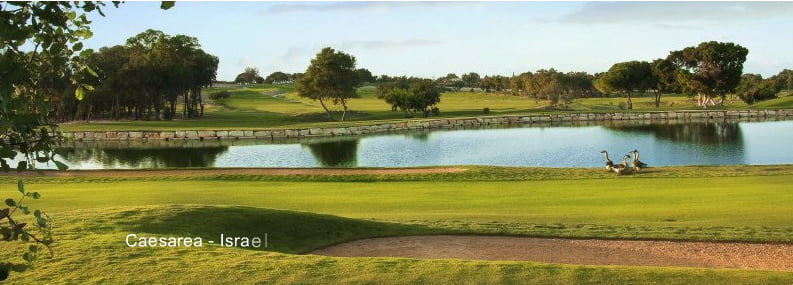About three years have passed since the famous golf courses in Caesarea, Israel, have been through a serious makeover engineered by Pit Dai, the number one golf course designer in the world. Even before the water crisis emerged as one of Israel’s top problems, the golf club already thought of how to grow 450 dunams (45 hectares) of green lawn without wasting too much water. I met Avi Avital, who has been running the golf courses for eleven years. He explained to me how they have succeeded to use low consumption of water on their golf lawns.
In the early 90’s Caesrea’s golf course used salt water pumped from wells that contain water with no other use, but the grass didn’t really “like it.” At the end of the summer, the lawns were no longer looking so green: “the lawn just collapsed because of the salty water,” Avital explained.
That is why, several years ago, a type of grass was imported from beaches on South Africa’s and Australia’s borders, with grass roots that grew strong even with salt water. According to Avital, the grass can grow well even when it’s watered with 40 percent sea water and 60 percent fresh water.
In addition, the entire watering system of the Caesarea golf courses is controlled by a computerized system which allows planning and programming of every sprinkler separately. Despite this, Avital explains there are areas in the lawns that get too much water while others suffer from deprivation. The micro-climate and humidity measured by computerized system’s sensors are not the same across the entire surface. Because of this there is a need for human consideration in addition to the automatic computerized system, Avital explained. Every sprinkle is therefore tuned separately for optimal watering.
…
To continue reading this story in Hebrew click here
Translated by Lee Golan
Via www.epochtimes.co.il
Photo By Charlie Brewer
Related posts

Resilient And Nutritious New Plant-Based Milk Aims To Make A Splash

Chocolate From Cultivated Cocoa Comes Without Environmental Toll

Plastic Fantastic: Startup Takes PVC Back To Its Crude Oil Roots




Facebook comments